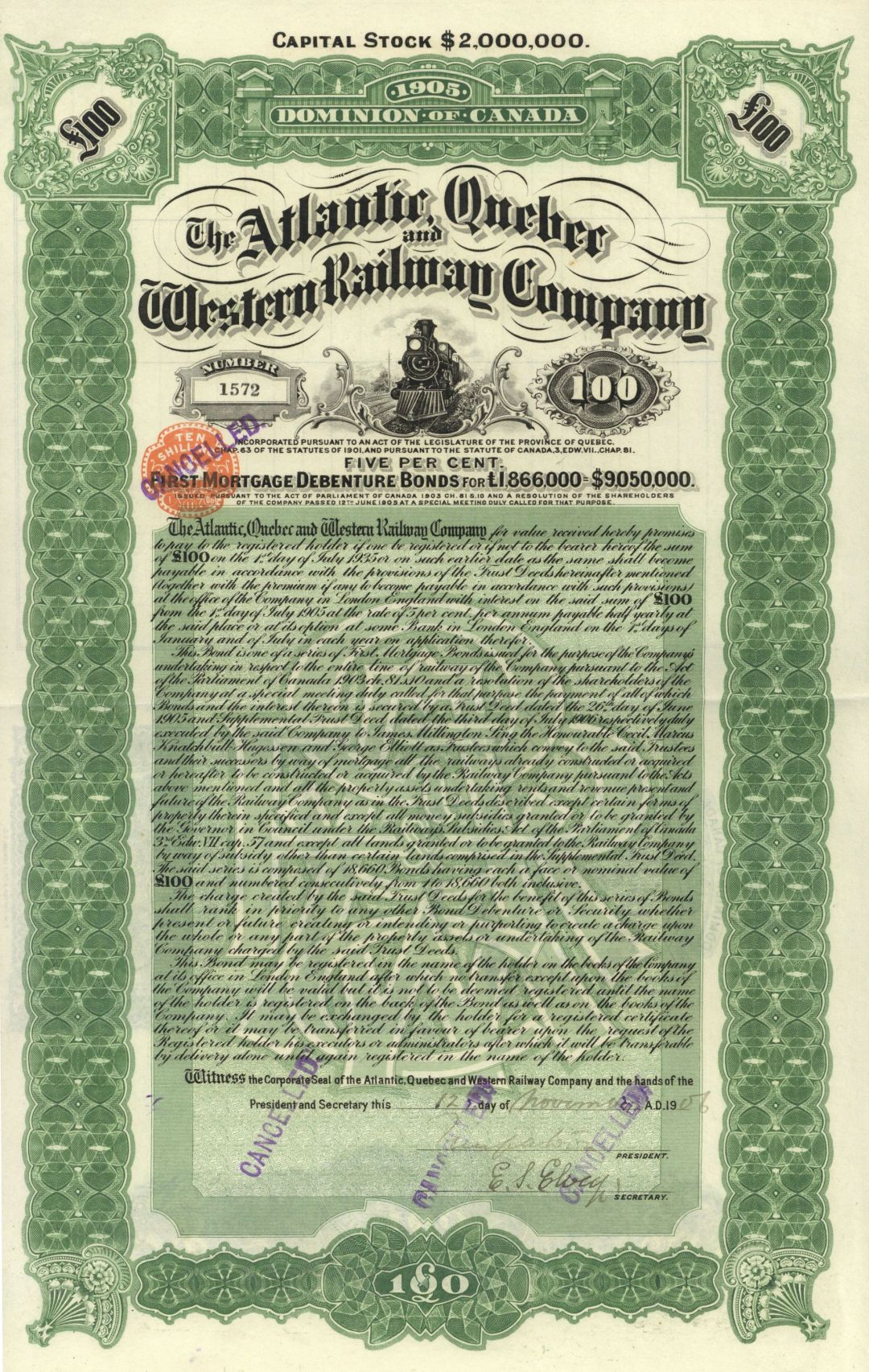Atlantic, Quebec and Western Railway Co. - 1906 dated 100 British Pound Canadian Railroad Bond - Dominion of Canada
Inv# FB5001 Bond100 British Pound Denomination. Train vignette. Very elaborate title and borders. Printed by F W Potter, London. In relation to the Atlantic, Quebec and Western Railway Company, the Canadian National Railways (CNR) was incorporated on June 6, 1919, comprising several railways that had become bankrupt and fallen into Government of Canada hands, along with some railways already owned by the government. Primarily a freight railway, CN also operated passenger services until 1978, when they were assumed by Via Rail. The only passenger services run by CN after 1978 were several mixed trains (freight and passenger) in Newfoundland, and several commuter trains both on CN's electrified routes and towards the South Shore in the Montreal area (the latter lasted without any public subsidy until 1986). The Newfoundland mixed trains lasted until 1988, while the Montreal commuter trains are now operated by Montreal's EXO. Read more at https://en.wikipedia.org/wiki/List_of_Canadian_National_Railways_companies
A bond is a document of title for a loan. Bonds are issued, not only by businesses, but also by national, state or city governments, or other public bodies, or sometimes by individuals. Bonds are a loan to the company or other body. They are normally repayable within a stated period of time. Bonds earn interest at a fixed rate, which must usually be paid by the undertaking regardless of its financial results. A bondholder is a creditor of the undertaking.











Ebay ID: labarre_galleries